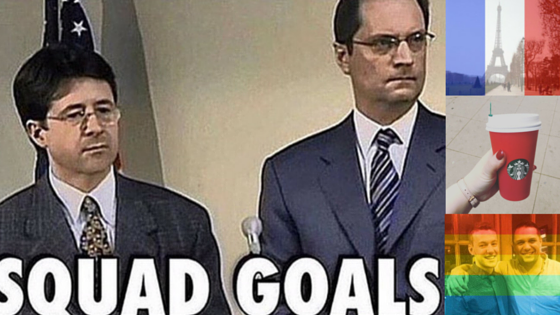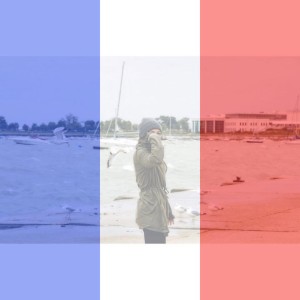Warning: Minor Making a Murderer spoilers ahead.
“Steven Avery definitely did it! Remember the cat?!”
“There’s no way Brendan Dassey committed the crime. He confessed and still thought he would get to watch Wrestlemania…”
“I don’t trust Mike Halbach. Let’s not forget about the voicemails, people.”
Shortly after Christmas, I logged onto my Facebook and Twitter accounts to see dozens of messages just like these. All of my friends (who had apparently become private investigators overnight) were debating Netflix’s latest hit, Making a Murderer – a true crime docuseries, chronicling the murder case of Teresa Halbach. Posts about the show and its main players – Steven “Did He Do It?” Avery, Brendan “I Don’t Know” Dassey, Dean “Heartthrob” Strang, Jerry “Knows His Shit” Buting, Ken “Full of Krap” Kratz – were unavoidable. From memes to theories to parodies, the case demanded your attention.
This obsession got me thinking: what other events have garnered this same, heightened level of social media exposure? So, I decided to compile a list of some of social media’s most recent, viral phenomena:
Kony 2012
Back in 2012, filmmaker, Jason Russell, and Invisible Children, Inc set out to make the evils of war criminal, Joseph Kony, known. In their 30-minute video, they explored Kony’s long history of abducting and brainwashing Ugandan children to turn them into soldiers. Their goal was to motivate the public and more importantly, government leaders to join the fight against Kony and his supporters. The video quickly became one of the fastest viral videos of all time, reaching “100 million views in 6 days (“Kony 2012,” 2014).”
I was in college when this video was released, and I remember my peers going CRAZY. The video devoured my timeline, inspiring friends to donate to the cause and activist groups to form on campus. Sadly, the craze quickly died after questions began to circulate around where fundraising dollars were being spent (hint: not where donors thought they were going). Every once in awhile, though, you’ll still see some internet troll adding #Kony2012 after an unrelated tweet.
ALS Ice Bucket Challenge
“I’m Kristina, and this is Bill. Carrie and Kathy nominated us to do the ALS Ice Bucket Challenge to help raise awareness and donations.”
This was the intro to my own Ice Bucket Challenge video. When I posted the video on Facebook in August of 2014, social media’s latest phase was dumping buckets of ice water on each other and filming the action to prove it. The point was to raise awareness for ALS, “a progressive neurodegenerative disease that affects nerve cells in the brain and the spinal cord (“What is ALS?,” 2016).” The momentary lapse in movement participants experienced from the cold was meant to mimic what those with ALS endured every day. Moreover, all were asked to make a donation to the ALS Association to help fund research.
Everyone – neighbors, teachers, celebrities – were participating in the challenge and giving as a result. Donations to the ALS Association skyrocketed and helped make a rare disease better known and understood. This was one phenomenon that actually made a real and important difference.
The Dress
In February 2015, social media erupted into pandemonium over one of its biggest arguments in recent memory: the dress. WAS IT WHITE AND GOLD? WAS IT BLUE AND BLACK? What felt like the entire world relentlessly argued over its colors. The photo stirred up group chats, pitted coworkers against each other, and divided families into two.
Here is my actual status regarding the dress debacle of 2k15:
The manufacturer did end up specifying that the dress was blue and black, and soon after, several scientific explanations were released to explain why not everyone saw it that way. Social media slowly let the topic die, but I still recommend not bringing it up in everyday conversation (unless you’re ready to argue about it again).
#TeamWhiteandGold.
Profile Picture Filters
What do gay marriage and the Paris attacks have in common? Facebook filters.
In June 2015, the Supreme Court ruled that same-sex marriage must be honored in all 50 states. Facebook commemorated this momentous occasion by creating a rainbow filter that its users could put over their profile picture to signify their support. In November of the same year, Facebook enabled this feature again, in the form of a French flag, during the wake of the Paris attacks. People all over the world stood in solidarity with France online.
Although the filters were nothing but symbolic, I loved that the option was made available. It gave the world an opportunity to unify together against injustice and violence. It showed those in the LGBT community and all over France that they were not alone in their struggles. This temporary act made a lasting impact.
Hotline Bling
This is hands-down my favorite, recent social media phenomenon. When Drake dropped his music video for “Hotline Bling” in October 2015, the internet EXPLODED. Almost instantaneously, my feed was full of memes and parodies that poked fun at his dad dance moves.
My personal favorites were the ones that edited Drake into Wii Sports games. Please take a look at Exhibit A.
The Red Cup
Ahhhh, let’s talk about December’s phenomenon: the war on Christmas. This past holiday season, Starbucks opted for plain red cups rather than ones decorated with festive snowflakes or delicate holly branches. While most people didn’t notice or care about the change in branding, some Christians decided to voice their distaste on the internet, claiming that the move was a subtle attempt to remove any religious undertones from the holiday. Those who disagreed with this viewpoint also voiced their opinions on social media, leading to an all-out debate.
As a Catholic, I thought the whole controversy was crazy. Starbucks still served Christmas Blend and sold Advent calendars, so how could they be against Christmas? Scanning my timeline, it appeared that all of my friends agreed. In fact, I did not see anyone who argued that Starbucks was waging a war on Christianity. That got me wondering: actual controversy or social media myth?







